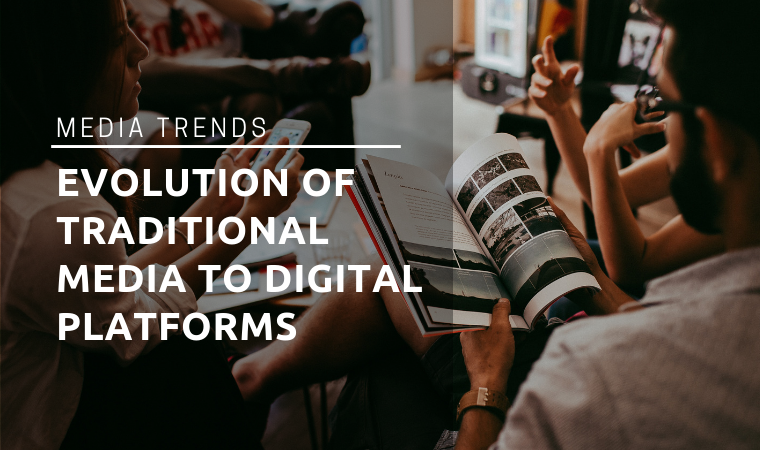
Traditional media still matter but are evolving to become more than a standard publication that’s sold on a newsstand thanks to the rise of the internet. Because millennials and Gen-Zers are looking at their smartphones and computers, print magazines and newspapers look dramatically different today than they did even a decade ago and have changed to better suit their niche audiences as well as keep up with industry trends.
As a prime example of this shift from traditional media to digital platforms, we’re taking a look at Bon Appetit, which first began as a print magazine in 1956 and has evolved into a food media empire owned by industry giant Conde Nast. We’ll use Bon Appetit as a case study to look at three ways traditional media is evolving.
Video Content
In order to reach a wider audience and showcase content in an authentic and creative way, traditional media outlets are turning to YouTube. Bon Appetit has taken the internet by storm with videos that are racking up millions of views.
Bon Appetit’s editors serve as “on-air” talent with specific niches, from “Gourmet Makes,” where Claire Saffitz attempts to recreate classic snack foods, to “It’s Alive,” where Brad Leone experiments with fermenting food. Typically, a magazine editor would be a behind-the-scenes presence focused on publishing content, but at Bon Appetit the editors serve as personalities that help shape the overall brand.
According to Bon Appetit Editor-In-Chief Adam Rapoport, it took a few tries to get the brand’s video content on par and on-brand with its other content. When done well, a brand’s video content can work to amplify its overall brand and connect with new audiences.
We’re interested to see what the future holds for traditional media outlets creating video content and which other publications follow suit.
Content Verticals
In traditional media, we’re used to seeing content divided into columns and sections. The 2019 version of sections could be considered content verticals. Content verticals are helpful for users and editorial staff, clearly defining who the content is targeting.
Bon Appetit, for example, has three content verticals: Healthyish, Basically and its flagship, Bon Appetit. Each vertical is specifically designed to cover a certain topic and help audiences navigate the page. This gives publications the opportunity to clearly define and expand their audience reach, as well as offer an outlet for niche interests.
Social Media
Engaging with audiences on social media continues to be essential for all brands, not just media outlets. Traditional print publications, including Bon Appetit and others, have become social media masters – creating content to engage audiences and generate web traffic.
Breakfast on @gjustabakery’s patio > breakfast literally anywhere else. ?: @alizarae #BAstaff
A post shared by bonappetitmag (@bonappetitmag) on
Bon Appetit’s social media presence is a great example of how casual and conversational content resonates with audiences. Gone are the days of needing to be purely informative or instructional in food media. Senior associate food editor Molly Baz said in a recent Slate podcast that she even garners many of her recipe ideas from Instagram trends, bringing the social media cycle comes full circle.
[bctt tweet=”.@BonAppetit’s social media presence is a great example of how casual and conversational content resonates with audiences. ” username=”@stantoncomm”]
Developing a social media presence that’s relatable to your audience yet still shares your brand story is something we should all aspire to.
What’s Next?
These trends represent a departure from the print beginnings of traditional media, and we’re curious to see what other developments traditional media outlets make in the near future. With many of us consuming news digitally, the sky’s the limit for the future of traditional media’s online platforms.